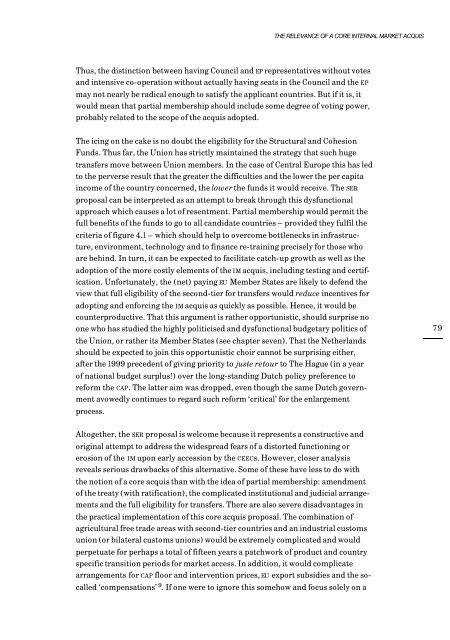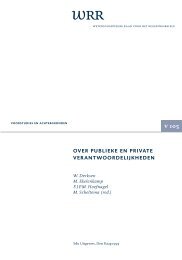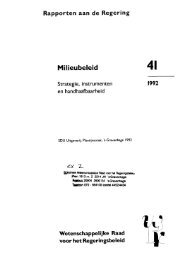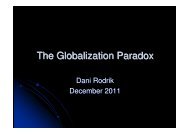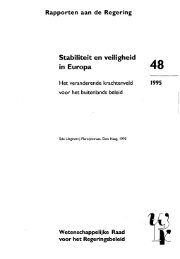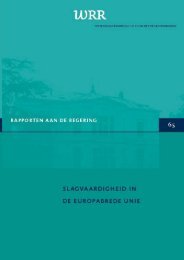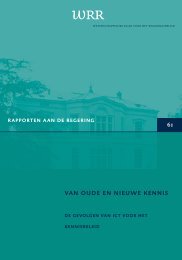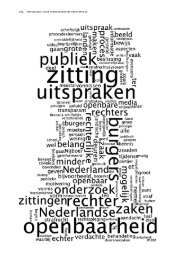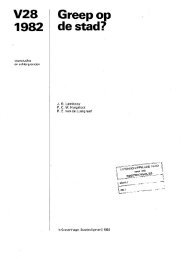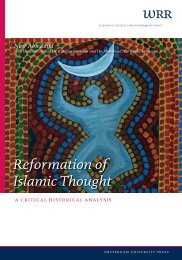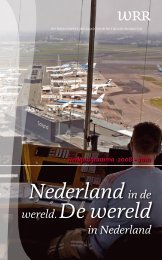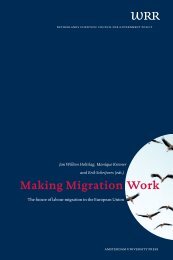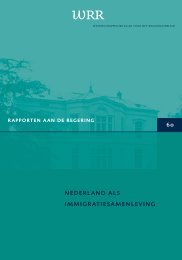LONG-RUN ECONOMIC ASPECTS OF THE EUROPEAN UNION’S EASTERN ENLARGEMENT78common trade policy implies (at minimum) a shift from a free trade area to acustoms union (without agriculture). It would bring <strong>the</strong> ‘partial-members’ to astatus already accomplished by Turkey. Even without agriculture, such a customsunion is GATT-compatible because it is explicitly meant to be completed withagriculture later on. But it would create enormous complications during a decadeor so. It is clear that partial membership is meant for a second tier <strong>of</strong> applicantcountries, which are behind in acquis adoption and enforcement and which haveproblems <strong>of</strong> transition, stabilisation and competitive performance. This <strong>the</strong>reforeimplies that an EU -20 or EU -21, would be subjected to complex agricultural transitionperiods, resulting in higher protection against <strong>the</strong> export from <strong>the</strong> ‘secondtier’countries to <strong>the</strong> ‘first-tier’ countries. In any event, <strong>the</strong> first tier will obtainaccess to <strong>the</strong> agricultural market <strong>of</strong> <strong>the</strong> EU -15, thus rendering it far more difficultfor <strong>the</strong> second tier to export to <strong>the</strong> EU -15. To prevent this, <strong>the</strong> EU-15 would have toextend <strong>the</strong> free trade areas with all <strong>the</strong> CEECs to agriculture, so that <strong>the</strong> second tieris not grossly disadvantaged. For industrial goods a customs union can <strong>the</strong>n beagreed. Yet a free trade area in agriculture, with <strong>the</strong> EU -15 (or perhaps <strong>the</strong> EU -20)applying <strong>the</strong> CAP, is nothing less than a nightmare scenario, due to its complexityand incentives for fraud. And all <strong>of</strong> this would apply for only a limited period <strong>of</strong>time, until graduation to full membership. More likely, <strong>the</strong>refore, <strong>the</strong> EU wouldra<strong>the</strong>r opt for compensations in terms <strong>of</strong> market access on a case by case basis, inanalogy to what Tunisia and Morocco obtained with <strong>the</strong> accession <strong>of</strong> Spain andPortugal. Such compensatory negotiations would in any event be inescapable oncea first group will enter <strong>the</strong> Union.Ano<strong>the</strong>r non-trivial issue related to <strong>the</strong> customs union for a group <strong>of</strong> 28 states is<strong>the</strong> establishment <strong>of</strong> a common competition policy. The Europe Agreements entaila commitment to introduce national competition policies (based on Articles 81, 82and 86, EC) as well as some kind <strong>of</strong> self-discipline in state aids. Merger control hasbeen introduced in Central Europe, although it is not in <strong>the</strong> Europe Agreements. Itwould require ei<strong>the</strong>r a treaty change or a kind <strong>of</strong> EEA arrangement for a commoncompetition policy to be possible.The institutional box in figure 4.1 suggests <strong>the</strong>re is access to <strong>the</strong> European Court <strong>of</strong>Justice (ECJ), presumably limited to <strong>the</strong> areas falling under <strong>the</strong> scope <strong>of</strong> partialmembership. The legal complications here are enormous. Probably <strong>the</strong> least complicatedsolution would be a special court (similar to that <strong>of</strong> <strong>the</strong> EEA) for relationswith <strong>the</strong> partial members, subject to a treaty, with full ratification procedures, yetwithout touching <strong>the</strong> institutional EU acquis itself. The SER proposal entails threenon-IM elements: decision-making, foreign and security policy and structural andcohesion policy. It is unclear what <strong>the</strong> participation in decision-making (Council,EP) exactly means; participation without votes (as sometimes occurs in EMUissues), full participation or something complex in-between? The political implications<strong>of</strong> <strong>the</strong>se variants differ ra<strong>the</strong>r drastically, both for Brussels/Strasbourg andfor <strong>the</strong> domestic politics <strong>of</strong> <strong>the</strong> partial members. This is important because itshould accentuate <strong>the</strong> difference between <strong>the</strong> EEA route and <strong>the</strong> membership route.
THE RELEVANCE OF A CORE INTERNAL MARKET ACQUISThus, <strong>the</strong> distinction between having Council and EP representatives without votesand intensive co-operation without actually having seats in <strong>the</strong> Council and <strong>the</strong> EPmay not nearly be radical enough to satisfy <strong>the</strong> applicant countries. But if it is, itwould mean that partial membership should include some degree <strong>of</strong> voting power,probably related to <strong>the</strong> scope <strong>of</strong> <strong>the</strong> acquis adopted.The icing on <strong>the</strong> cake is no doubt <strong>the</strong> eligibility for <strong>the</strong> Structural and CohesionFunds. Thus far, <strong>the</strong> Union has strictly maintained <strong>the</strong> strategy that such hugetransfers move between Union members. In <strong>the</strong> case <strong>of</strong> Central Europe this has ledto <strong>the</strong> perverse result that <strong>the</strong> greater <strong>the</strong> difficulties and <strong>the</strong> lower <strong>the</strong> per capitaincome <strong>of</strong> <strong>the</strong> country concerned, <strong>the</strong> lower <strong>the</strong> funds it would receive. The SERproposal can be interpreted as an attempt to break through this dysfunctionalapproach which causes a lot <strong>of</strong> resentment. Partial membership would permit <strong>the</strong>full benefits <strong>of</strong> <strong>the</strong> funds to go to all candidate countries – provided <strong>the</strong>y fulfil <strong>the</strong>criteria <strong>of</strong> figure 4.1 – which should help to overcome bottlenecks in infrastructure,environment, technology and to finance re-training precisely for those whoare behind. In turn, it can be expected to facilitate catch-up growth as well as <strong>the</strong>adoption <strong>of</strong> <strong>the</strong> more costly elements <strong>of</strong> <strong>the</strong> IM acquis, including testing and certification.Unfortunately, <strong>the</strong> (net) paying EU Member States are likely to defend <strong>the</strong>view that full eligibility <strong>of</strong> <strong>the</strong> second-tier for transfers would reduce incentives foradopting and enforcing <strong>the</strong> IM acquis as quickly as possible. Hence, it would becounterproductive. That this argument is ra<strong>the</strong>r opportunistic, should surprise noone who has studied <strong>the</strong> highly politicised and dysfunctional budgetary politics <strong>of</strong><strong>the</strong> Union, or ra<strong>the</strong>r its Member States (see chapter seven). That <strong>the</strong> Ne<strong>the</strong>rlandsshould be expected to join this opportunistic choir cannot be surprising ei<strong>the</strong>r,after <strong>the</strong> 1999 precedent <strong>of</strong> giving priority to juste retour to The Hague (in a year<strong>of</strong> national budget surplus!) over <strong>the</strong> <strong>long</strong>-standing Dutch policy preference toreform <strong>the</strong> CAP. The latter aim was dropped, even though <strong>the</strong> same Dutch governmentavowedly continues to regard such reform ‘critical’ for <strong>the</strong> enlargementprocess.79Altoge<strong>the</strong>r, <strong>the</strong> SER proposal is welcome because it represents a constructive andoriginal attempt to address <strong>the</strong> widespread fears <strong>of</strong> a distorted functioning orerosion <strong>of</strong> <strong>the</strong> IM upon early accession by <strong>the</strong> CEECs. However, closer analysisreveals serious drawbacks <strong>of</strong> this alternative. Some <strong>of</strong> <strong>the</strong>se have less to do with<strong>the</strong> notion <strong>of</strong> a core acquis than with <strong>the</strong> idea <strong>of</strong> partial membership: amendment<strong>of</strong> <strong>the</strong> treaty (with ratification), <strong>the</strong> complicated institutional and judicial arrangementsand <strong>the</strong> full eligibility for transfers. There are also severe disadvantages in<strong>the</strong> practical implementation <strong>of</strong> this core acquis proposal. The combination <strong>of</strong>agricultural free trade areas with second-tier countries and an industrial customsunion (or bilateral customs unions) would be extremely complicated and wouldperpetuate for perhaps a total <strong>of</strong> fifteen years a patchwork <strong>of</strong> product and countryspecific transition periods for market access. In addition, it would complicatearrangements for CAP floor and intervention prices, EU export subsidies and <strong>the</strong> socalled‘compensations’ 9 . If one were to ignore this somehow and focus solely on a
- Page 1:
WORKING DOCUMENTS W 109LONG-RUN ECO
- Page 5 and 6:
CONTENTSCONTENTSPreface 3Summary 91
- Page 7:
CONTENTSAnnexes1 The Balassa-Samuel
- Page 10 and 11:
LONG-RUN ECONOMIC ASPECTS OF THE EU
- Page 12 and 13:
LONG-RUN ECONOMIC ASPECTS OF THE EU
- Page 15 and 16:
INTRODUCTION1 INTRODUCTIONThe Europ
- Page 17 and 18:
INTRODUCTION4 To what extent do the
- Page 19 and 20:
INTRODUCTIONefficiency-based (first
- Page 21 and 22:
INTRODUCTIONThe exercise is not so
- Page 23 and 24:
INTRODUCTIONsome suggestions to min
- Page 25 and 26:
PROBLEMS OF ACCESSION TO THE INTERN
- Page 27 and 28: PROBLEMS OF ACCESSION TO THE INTERN
- Page 29 and 30: PROBLEMS OF ACCESSION TO THE INTERN
- Page 31 and 32: PROBLEMS OF ACCESSION TO THE INTERN
- Page 33 and 34: PROBLEMS OF ACCESSION TO THE INTERN
- Page 35 and 36: PROBLEMS OF ACCESSION TO THE INTERN
- Page 37 and 38: PROBLEMS OF ACCESSION TO THE INTERN
- Page 39 and 40: PROBLEMS OF ACCESSION TO THE INTERN
- Page 41 and 42: PROBLEMS OF ACCESSION TO THE INTERN
- Page 43 and 44: PROBLEMS OF ACCESSION TO THE INTERN
- Page 45 and 46: PROBLEMS OF ACCESSION TO THE INTERN
- Page 47 and 48: PROBLEMS OF ACCESSION TO THE INTERN
- Page 49 and 50: PROBLEMS OF ACCESSION TO THE INTERN
- Page 51 and 52: PROBLEMS OF ACCESSION TO THE INTERN
- Page 53 and 54: PROBLEMS OF ACCESSION TO THE INTERN
- Page 55 and 56: PROBLEMS OF ACCESSION TO THE INTERN
- Page 57: PROBLEMS OF ACCESSION TO THE INTERN
- Page 60 and 61: LONG-RUN ECONOMIC ASPECTS OF THE EU
- Page 62 and 63: LONG-RUN ECONOMIC ASPECTS OF THE EU
- Page 64 and 65: LONG-RUN ECONOMIC ASPECTS OF THE EU
- Page 66 and 67: LONG-RUN ECONOMIC ASPECTS OF THE EU
- Page 68 and 69: LONG-RUN ECONOMIC ASPECTS OF THE EU
- Page 70 and 71: LONG-RUN ECONOMIC ASPECTS OF THE EU
- Page 72 and 73: LONG-RUN ECONOMIC ASPECTS OF THE EU
- Page 74 and 75: LONG-RUN ECONOMIC ASPECTS OF THE EU
- Page 76 and 77: LONG-RUN ECONOMIC ASPECTS OF THE EU
- Page 80 and 81: LONG-RUN ECONOMIC ASPECTS OF THE EU
- Page 82 and 83: LONG-RUN ECONOMIC ASPECTS OF THE EU
- Page 84 and 85: LONG-RUN ECONOMIC ASPECTS OF THE EU
- Page 86 and 87: LONG-RUN ECONOMIC ASPECTS OF THE EU
- Page 89 and 90: A SOUND AND DYNAMIC ECONOMIC UNION5
- Page 91 and 92: A SOUND AND DYNAMIC ECONOMIC UNION5
- Page 93 and 94: A SOUND AND DYNAMIC ECONOMIC UNIONc
- Page 95 and 96: A SOUND AND DYNAMIC ECONOMIC UNIONW
- Page 97 and 98: A SOUND AND DYNAMIC ECONOMIC UNION
- Page 99 and 100: EMU, EURO AND ENLARGEMENT6 EMU, THE
- Page 101 and 102: EMU, EURO AND ENLARGEMENTTable 6.1
- Page 103 and 104: EMU, EURO AND ENLARGEMENTDepositsDe
- Page 105 and 106: EMU, EURO AND ENLARGEMENTEmployment
- Page 107 and 108: EMU, EURO AND ENLARGEMENTwhich is s
- Page 109 and 110: EMU, EURO AND ENLARGEMENT• The sa
- Page 111 and 112: EMU, EURO AND ENLARGEMENTenues. Mea
- Page 113 and 114: EMU, EURO AND ENLARGEMENTany ‘cle
- Page 115 and 116: EMU, EURO AND ENLARGEMENTTable 6.6D
- Page 117 and 118: EMU, EURO AND ENLARGEMENTDeposit mo
- Page 119 and 120: EMU, EURO AND ENLARGEMENTIf the ECB
- Page 121 and 122: EMU, EURO AND ENLARGEMENTBox 6.1The
- Page 123 and 124: EMU, EURO AND ENLARGEMENTexchange r
- Page 125 and 126: EMU, EURO AND ENLARGEMENTvariabilit
- Page 127 and 128: EMU, EURO AND ENLARGEMENTFigure 6.1
- Page 129 and 130:
EMU, EURO AND ENLARGEMENT• The lo
- Page 131 and 132:
EMU, EURO AND ENLARGEMENTwill remai
- Page 133 and 134:
EMU, EURO AND ENLARGEMENTadopting t
- Page 135 and 136:
BUDGETARY TRANSFERS IN AN ENLARGED
- Page 137 and 138:
BUDGETARY TRANSFERS IN AN ENLARGED
- Page 139 and 140:
BUDGETARY TRANSFERS IN AN ENLARGED
- Page 141 and 142:
BUDGETARY TRANSFERS IN AN ENLARGED
- Page 143:
BUDGETARY TRANSFERS IN AN ENLARGED
- Page 146 and 147:
LONG-RUN ECONOMIC ASPECTS OF THE EU
- Page 148 and 149:
LONG-RUN ECONOMIC ASPECTS OF THE EU
- Page 150 and 151:
LONG-RUN ECONOMIC ASPECTS OF THE EU
- Page 152 and 153:
LONG-RUN ECONOMIC ASPECTS OF THE EU
- Page 154 and 155:
LONG-RUN ECONOMIC ASPECTS OF THE EU
- Page 157 and 158:
LITERATURELITERATUREAlberolo-Ila, E
- Page 159 and 160:
LITERATURECommission (1998i) Twenty
- Page 161:
LITERATURETornell, A. and A. Velasc
- Page 164 and 165:
LONG-RUN ECONOMIC ASPECTS OF THE EU
- Page 166 and 167:
LONG-RUN ECONOMIC ASPECTS OF THE EU
- Page 168 and 169:
LONG-RUN ECONOMIC ASPECTS OF THE EU
- Page 170 and 171:
LONG-RUN ECONOMIC ASPECTS OF THE EU
- Page 172 and 173:
LONG-RUN ECONOMIC ASPECTS OF THE EU
- Page 175 and 176:
ANNEXESANNEX 2WHY IT PAYS TO JOIN T
- Page 177 and 178:
ANNEXESThe key item in equation (4)
- Page 179 and 180:
ANNEXEScommon reserve pool of the E
- Page 181 and 182:
ANNEXESThe day Estonia joins EMU th
- Page 183 and 184:
ANNEXESANNEX 3THE VARIABILITY OF TH
- Page 185 and 186:
ANNEXESTable A4Correlation coeffici
- Page 187 and 188:
ANNEXESVariability of relative CPIM
- Page 189 and 190:
ANNEXESANNEX 4AVERAGE FARM NET VALU
- Page 191 and 192:
ANNEXESANNEX 5EU BUDGET 1997 COMPAR
- Page 193 and 194:
ANNEXESTable A10Estimated expenditu
- Page 195 and 196:
ANNEXESANNEX 6 EFFECTS OF THE BERLI
- Page 197:
ANNEXESTable A17Estimated expenditu
- Page 200 and 201:
LONG-RUN ECONOMIC ASPECTS OF THE EU
- Page 203 and 204:
ANNEXESANNEX 8TECHNICAL ASPECTS AND
- Page 205 and 206:
ANNEXESreasons the Commission (1998
- Page 207:
ANNEXESOwn resourcesThe amount reta


